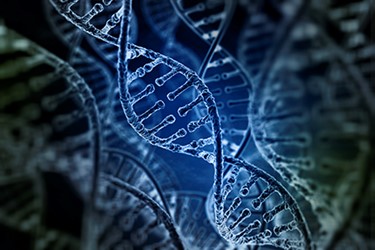Quality Starting Material: The Driving Force Behind Life-Saving Cell Therapies
By Jamie Margolis, PhD., Director, Cell and Gene Therapy Operations, Be The Match BioTherapies® and Senior Vice President, Donor Services, the National Marrow Donor Program®/Be The Match®

We are living through one of the most exciting eras biopharmaceutical science has ever seen following the first U.S. and European regulatory approvals of gene therapies and CAR-T therapies in recent years, activity in this industry has skyrocketed. In the U.S., more than 800 clinical trials are currently operational and that number is expected to double within the next five years. By 2030, half a million patients in the U.S. will have been treated with cell or gene therapies, according to an analysis by MIT’s New Drug Development Paradigms Initiative.
Many who follow the drug development space will know of these dramatic trends. However, what many people, even those working in the biotech industry, are less familiar with is the behind-the-scenes contribution of hundreds of specialized medical facilities, and thousands of blood, plasma, or stem cell donors that are needed to create today’s cell and gene therapy revolution — and their ongoing role in realizing the therapies on the horizon.
The Evolving Role of Apheresis Centers in Cell and Gene Therapies
Apheresis centers have both the specialized equipment and the deep professional know-how to collect unique cell types from peripheral blood, assess the quality of the collection, and package them appropriately to keep them safe during transport and viable for transplantation upon arrival.
Over the past decade, these same clinicians and hospitals have become an integral part of cell and gene therapy supply chain. This has been necessary, of course, because cell and gene therapies require blood, plasma, stem cells or other types of cells as starting material, analogous to how small molecule biopharma companies must ensure adequate supply of reagents, acids and buffers. The role of apheresis centers, and the associated cell therapy labs, bookends the patient treatment process: For autologous and allogeneic cell therapies, they lead the first major milestone of the supply chain by collecting the cells and they generally lead one of the last steps, preparing the product for infusion.
Apheresis is a medical procedure that takes skill as well as art. While the apheresis machine does the physical work, it is the highly-trained medical team that can decipher a confusing signal, isolate cells from healthy donors and sick patients, and determine the quality of the resulting cells with high confidence. In the high-stakes world of cell and gene therapies, where time is of the essence and each dose is precious, improper collection, handling or administration of these treatments could put patient safety at risk. Luckily for the cell and gene therapy industry, the deep expertise of apheresis centers in the U.S. and abroad can now be leveraged in new ways as new therapies requiring apheresis enter clinical trials.
How Will Apheresis Centers Handle the Rapid Scaling of Cell and Gene Therapies?
However, as cell therapies seek approval for more common conditions, the scale becomes a major challenge. From 20,000 bone marrow transplants per year, a decade from now these centers could be managing 100,000 cell and gene therapy treatments per year, while still supporting the other needs of large hospitals, such as treating hematology and solid organ transplant patients and performing red cell and plasma exchanges. Many hospitals we work with at Be The Match BioTherapies are not only treating patients with the two approved CAR-T therapies and two approved gene therapies, they are also engaged in multiple ongoing clinical trials in cell and gene therapy – working to bring about tomorrow’s therapies.
This period of rapid growth has stretched capacity at some apheresis centers thin. An increased patient volume has put greater strain on these centers’ scheduling, staffing and space, and many are actively trying to manage these issues. Alongside those unavoidable growing pains, however, are some that are potentially avoidable: The increasing number of mismatched protocols and disparate audits that take up time and increase the risk of human error.
At present, every therapy a center delivers, which can be well over 20, particularly at large hospitals, between approved treatments and those in clinical trials — has a different set of instructions: what collection bag and label to use; whether the cells should be maintained at room temperature or cryopreserved; even which software system the nurse needs to use to record the patient’s info. Each of these steps must be executed perfectly, and many are time-sensitive. This creates a huge amount of organizational strain on the nurses, techs and laboratory staff, and requires an equivalently complicated onboarding for new employees and regular refresher trainings for staff.
A second facet of the growing strain on apheresis centers has to do with audits. Like the manufacturing protocols, audits are separately run by each therapy manufacturer. These multiple, often redundant audits, take staff away from patient care to instead gather documents, crunch numbers and accompany auditors on regular walk-throughs of the space.
Simplifying inspections and audits is another change that our partners in the apheresis space tell us would make a meaningful difference in their ability to service the growing demand. Initiatives are already underway to try to create a single audit that could evaluate a center’s proficiencies for every therapy manufacturer who needs to have that information. This could potentially reduce clinical staffs’ time investment in preparing for and leading audits from a current load of perhaps 200 hours of staff time per year to 40 hours of staff time – with that remaining time going directly back to the patients in their care. Like standards in collection processes, standards in auditing would lay the groundwork now for the coming tidal wave of therapies these centers will see.
As apheresis centers look a few years into the future to offering perhaps 15-30 approved medicines, and hundreds more clinical trials, this current situation will very soon become untenable. It is for this reason that a growing number of clinicians and biotech companies alike are exploring the opportunities for standardization in both processes and audits. Creating a cohesive standard operating procedure for how cellular collections are done for various types of therapies would allow these clinicians to focus on giving the best patient care and evaluating the metrics that matter. It would also facilitate faster onboarding and training, both things that will only become greater in volume as apheresis centers look to expand their staff to accommodate the growth of cell and gene therapies.
The Way Forward: Standardization and Teamwork
The future of cell and gene therapies is deeply exciting for all of us who are working toward a day we have a cure for more diseases, when patients and their families have effective treatments based on the latest science available and can live better, longer lives because of it. To bring about this future, though, we must begin to build the standards, practices and principles that will strengthen the cell and gene therapy manufacturing process and prepare it for what’s to come. Therapy manufacturers and clinicians must unite to rise to the occasion at this moment in history as we enter the era of cell and gene therapies with a bright future on the horizon.
About the Author
 Jamie Margolis, PhD, is the Director of Cell and Gene Therapy Operations for Be The Match BioTherapies, and has more than 10 years of experience managing the complexities of cell and gene therapies. Jamie and her team work closely with clients to understand their unique needs and determine how Be The Match BioTherapies can best support delivery of services based on client specifications.
Jamie Margolis, PhD, is the Director of Cell and Gene Therapy Operations for Be The Match BioTherapies, and has more than 10 years of experience managing the complexities of cell and gene therapies. Jamie and her team work closely with clients to understand their unique needs and determine how Be The Match BioTherapies can best support delivery of services based on client specifications.
It is her team’s responsibility to ensure the smooth operational delivery of products and services to clients, such as supply chain management, development and management of collection networks, identifying and sourcing allogeneic donor cells, as well as regulatory compliance.
Jamie joined Be The Match BioTherapies’ parent organization, the NMDP/Be the Match, in 2009 and spent the first 6 years in patient case management supporting the operational needs of health care providers for stem cell transplant and developing solutions to overcome unexpected disruptions to the complex product delivery process. Jamie has worked for Be The Match BioTherapies since it was established in 2016.
She holds her PhD in Molecular Biology and Genetics from the University of Minnesota and received her B.S. in Biology from Clarke University in Dubuque, IA.
About Be The Match BioTherapies
Be The Match BioTherapies is the only cell and gene therapy solutions provider with customizable services to support the end-to-end cell therapy supply chain. Backed by the industry-leading experience of the National Marrow Donor Program/Be The Match, and a research partnership with the CIBMTR® (Center for International Blood and Marrow Transplant Research®), the organization designs solutions that advance the development of cell and gene therapies across the globe.
Be The Match BioTherapies is dedicated to accelerating patient access to life-saving cell and gene therapies by providing high-quality cellular source material from consented donors on the Be The Match Registry®, the world’s largest and most diverse registry of potential blood stem cell donors. Through established relationships with apheresis centers and transplant centers worldwide, the organization efficiently qualifies, develops and manages expansive cell collection networks. Based on a history of compliance managing the chain of identity, Be The Match BioTherapies uses proven infrastructure consisting of logistics and regulatory compliance experts, personalized cell therapy supply chain case managers and MatchSource® software to successfully transport and deliver regulatory compliant life-saving therapies across the globe. Through the CIBMTR, Be The Match BioTherapies extends services beyond the cell therapy supply chain to include long-term follow-up tracking for the first two FDA-approved CAR-T therapies.
For more information, visit www.BeTheMatchBioTherapies.com or follow Be The Match BioTherapies on LinkedIn or Twitter at @BTMBioTherapies.
